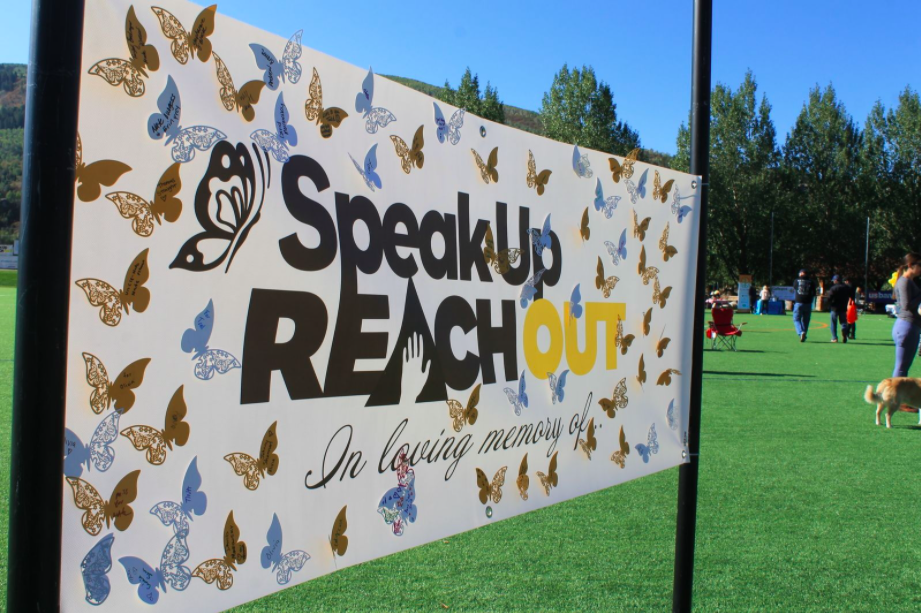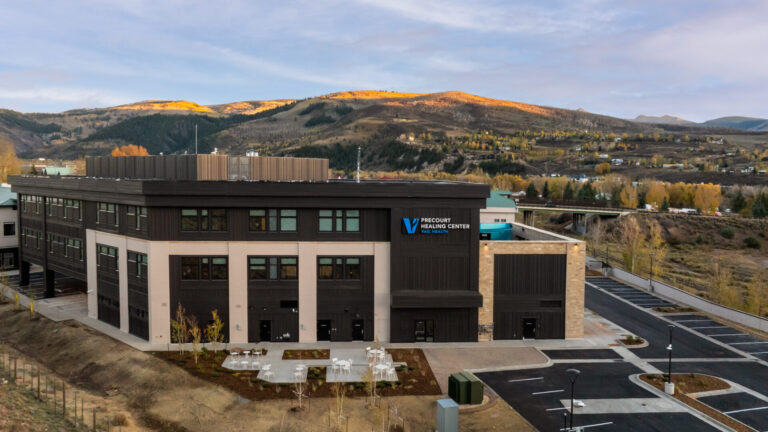Number of 2020 Eagle County Suicide Deaths Tells Half a Story
This article and photo first appeared in the Vail Daily on December 7, 2020.
Editor’s note: It is rare for the Vail Daily to report on death by suicide except in cases when the death by suicide involves a public person, occurs in a public place or involves public resources. Death by suicide is a public health issue, and it is the Vail Daily’s intention to raise awareness in a responsible manner and encourage those who are at risk to seek help.

Reporting the number of Eagle County’s annual deaths by suicide is one of the grimmest newspaper stories of year.
It’s also a half a story because while the number of lives lost can be quantified, the number of lives saved cannot be.
“We can’t measure the deaths that didn’t happen,” said Erin Ivie, executive director of SpeakUp ReachOut, the local suicide prevention group. “We do hear back from people we have helped, but that’s not a hard and fast number that is measurable.”
There have been 11 deaths by suicide in Eagle County to date in 2020. That matches the numbers from 2019 and represents a decrease from 2018 and 2017 when 17 and 16 such deaths occurred.
“Eleven people is still too many,” Ivie said. “But in the midst of a global pandemic when we thought we might lose many more people, we haven’t.”
Of course, there is an element of good fortune in reduced suicide figures during the emotionally charged atmosphere of COVID-19. But, more importantly, the statistic is the result of community effort that includes SpeakUp ReachOut education outreach, the work of the Hope Center of the Eagle River Valley and Vail Health’s commitment through Eagle Valley Behavioral Health to eliminate cost barriers for assistance.
It is also a signal that in this valley, the stigma associated with reaching out for mental health help is loosening.
Impact Training
During 2020, more than 2,500 Eagle County students and community members have participated in SpeakUp ReachOut training sessions and awareness events. Ivie noted there is research data that indicates for every individual trained in suicide prevention, six other lives are affected.
“When we say 2,500 students and community members were trained, we believe more like 12,000 people were impacted,” she said.
“We offer a range of training from one-hour to full-day sessions,” Ivie continued. “The majority of people are at our very basic training level, a course that teaches people to identify the signs of suicide and how to refer people to help. … The goal for SpeakUp ReachOut is, in the next five years, to get 75% of our community educated around suicide prevention.”
That may seem like a lofty goal, but basic suicide prevention training is readily accessible. For example SpeakUp ReachOut’s QPR — Question, Persuade, Refer — training program is a one-hour option based on research that shows people give warning signs prior to suicide. By recognizing those signs, friends and family can bring in help before it is too late. It all starts with asking someone if he or she is considering suicide.
“The truth is that you may be the best person, in the best possible position to recognize the warning signs of a suicide crisis and to prevent suicide,” reads the QPR Institute’s training booklet authored by Paul Quinnette, Ph.D.
Once the question has been asked, the next two steps involve persuading an individual to get help and then providing him or her with resources. The QPR method is positioned to work in Eagle County because of available resources for steps two and three.
“I am so incredibly grateful for the progress we have made in the area of behavioral health in Eagle County,” Ivie said. “I can only imagine what our community could be experiencing if we hadn’t.”
Home Delivery
In 2018, the local behavioral health landscape underwent a massive change when the Hope Center of the Eagle River Valley opened.
The Hope Center brings mental health services to people at the moment and in the environment where they most need them. Under the Hope Center model, a crisis clinician screens every potential mental health 911 or suicide hot line call to determine risks, safety and need.
Typically, within five minutes of launching a screening, the clinician knows whether or not to send help to the caller. If help is needed, then law enforcement or emergency medical personnel can be sent out, followed by a clinician shortly thereafter. While police or EMS personnel deal with enforcement or medical issues at the scene, Hope Center personnel are there to help with immediate mental health needs.
The moment of crisis is just the start of a long-term relationship. After the crisis has passed, the Hope Center remains in the patient’s life — connecting them with the appropriate community resources to help address their long-term needs.
According to Carrie Benway, executive director of the Hope Center of the Eagle River Valley, the organization has completed 579 evaluations and intakes to date in 2020. That compares to 370 during the same period in 2019. She added that May was the highest call volume month on record for the organization.
“One of our biggest hopes in our work is that people reach out to us before crisis,” noted Benway.
“Our crisis clinicians are skilled in supporting people,” noted Teresa Haynes, clinical supervisor for the Hope Center of the Eagle River Valley. “Although we are known as a 24/7 crisis team, I feel like our team also gets a lot of calls from people who haven’t reached that level of severity. That is really valuable, not only to meet people where we are supporting them if they are in a heightened crisis place, but also to meeting them when they are reaching out before they get to that level of crisis.”
Benway noted that increasingly, the Hope Center is hearing from friends and family who are advocating for someone to get help. She emphasized that the Hope Center won’t take the first step — someone has to personally request help before the center will respond — but this year there have been more speaker call situations where a concerned individual assists a Hope Center caller. The number for the Hope Center of the Eagle River Valley is 970-306-4673.
The goal for the Hope Center is to get people the help they need. Sometimes that involves hospitalization, but there has been a 74 percent decrease in the local number of behavioral health hospitalizations since the organization began services.
Removing Financial Barriers
According to the QRP training, most suicidal people who agree to get help will act in good faith and get the help they need. Therein lies a challenge — people in crisis need help that is both available and affordable. During the past two years, Eagle County has seen major improvements meeting both those needs.
According to Eagle Valley Behavioral Health — an organization created in April 2019 when Vail Health and community partners joined forces and committed $60 million to transform local behavioral health services — there are now 38 new mental health providers in the valley. That includes new professionals at Colorado Mountain Medical, the Hope Center clinicians, counselors based in local schools and more.
“If we just think about the capacity that 38 providers can bring, it is just tremendous,” said Casey Wolfington, the community director for Eagle Valley Behavioral Health.
For example, Wolfington noted that Colorado Mountain Medical recently reported that in is first year, the practice’s new behavioral health services reached more than 1,000 clients.
“And for the first time ever, we have large number of providers who are financially viable for our community,” Wolfington continued.
She noted the many local employers provide counseling benefits and there are local professionals who accept insurance, Medicare and Medicaid. And for anyone who needs help, there is Olivia’s Fund.
Olivia’s Fund — an Eagle Valley Behavioral Health program — provides financial assistance to anyone who lives or works in Eagle County to help pay for mental health and/or substance use services for up to six sessions per person per year. The scholarship funds are provided by generous private donors and foundations who wish to support behavioral health services but recognize that many individuals cannot obtain those services because of financial barriers.
“For people who are considering using Olivia’s Fund, but don’t know if they are eligible, we want them to apply,” said Wolfington. “We want more participation. This isn’t something that we ever discourage people from using.”
So far in 2020, Olivia’s fund has provided financial help for more than 150 local residents.
In the end, Wolfington agreed that it is easier to quantify lives lost to suicide than lives saved through training, programs and counseling.
“The vast majority of people to struggle tend to do so in isolation,” she said. “We only know about people who are reaching out in need.”
As the valley looks at the 11 deaths by suicide number for 2020, local behavioral health providers hope they will also consider the much larger numbers that reflect people receiving help.
“I really hope the people in our community will continue to take their mental health seriously and take advantage of the resources that are available,” said Ivie. “We have taken so many steps to help people and I think that is incredibly powerful.”


